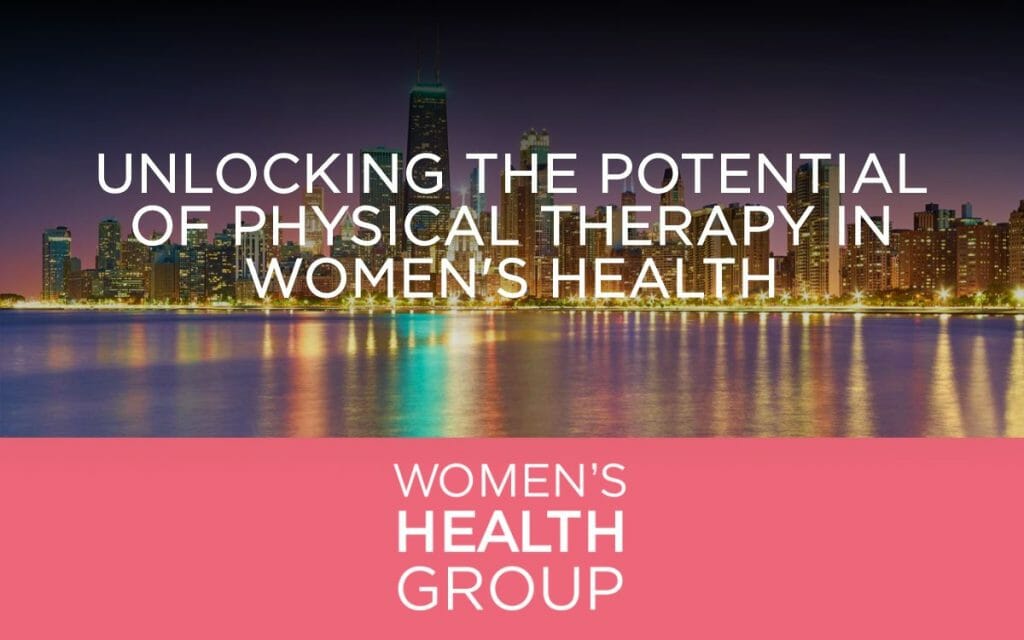As a part of the Women’s Health Group from Chicago, Illinois, we understand the unique health concerns of women. We are committed to holistic health solutions that address the complex needs of women throughout the various stages of life. One area in which our team has invested significant attention and research is the field of physical therapy. This has resulted in ground-breaking findings and innovative new treatments. This blog post delves into the remarkable potential of physical therapy in addressing and treating women’s health conditions.
Physical Therapy Potential in Women’s Health: An Overview
Physical therapy, a crucial element of overall health and wellness, has extensive yet largely untapped potential in Women’s health. Considering the anatomical, physiological, and hormonal differences between men and women, the potential for specialized, gender-specific applications of physical therapy techniques is enormous.
The majority of women’s health concerns, such as issues related to pregnancy and childbirth, menopause, osteoporosis, breast cancer, and even urinary incontinence, can all benefit from specific physical therapy approaches. The comprehensive benefits of physical therapy in these areas are owed to its ability to help alleviate pain, improve muscle strength and flexibility, enhance mobility and overall functioning, reduce inflammation, and accelerate the healing process.
Exploring the Role of Physical Therapy in Pregnancy and Postpartum Conditions
Pregnancy brings about a host of bodily changes. Women often experience pain and discomfort due to hormonal changes and physical stress on the body. Postpartum recovery, too, involves numerous physical challenges.
Here is where the potential of physical therapy shines:
– It can relieve pregnancy-related discomforts like back pain, pelvic pain, and urinary incontinence.
– Physical therapists can provide a therapeutic exercise regimen suited to each woman’s fitness level and specific needs.
– Postpartum physical therapy can aid in the recovery process, helping to restore pelvic floor strength, manage cesarean section scars, and address diastasis recti.
A skilled physical therapist, having a profound understanding of the physiological changes during pregnancy and postpartum period, can help manage these conditions while improving the patient’s overall physical health and well-being.
Addressing the Impact of Menopause Through Physical Therapy
Menopause is a significant phase in women’s lives. Yet, the transition can often come with a range of uncomfortable symptoms including hot flashes, night sweats, mood changes, and musculoskeletal complaints such as osteoporosis.
Physical therapy has the potential to address these symptoms via individualized therapy programs. Therapeutic exercises can help manage hot flashes and night sweats. Weight-bearing exercises, balance exercises, and resistance training can preserve bone density and reduce the risk of fractures in osteoporotic patients.
Using Physical Therapy in Cancer Rehabilitation
Physical therapy plays an essential role in improving the patient’s physical fitness pre- and post-cancer treatment. Customized physical therapy programs can help reduce pain, improve functional abilities, increase stamina, and help women transition back to their daily routines more efficiently.
According to the Mayo Clinic, physical therapy can separate scar tissues, reduce lymphedema, and improve strength and flexibility in breast cancer patients.
Physical Therapy and Incontinence
Physical therapy can also offer a conservative yet effective solution to one of the most common women’s health concerns: urinary incontinence. Women who have given birth, are post-menopausal, or have undergone pelvic surgery are more prone to this.
Physical therapists, through pelvic floor muscle training, behavioral strategies, and neuromuscular electrical stimulation, may help improve the symptoms and boost women’s quality of life, underpinning the physical therapy potential in incontinence management.
Final Thoughts
The potential of physical therapy in women’s health is vast and varied. It offers a complementary, non-pharmacological option for managing several health conditions unique to women such as pregnancy complications, menopause symptoms, and health conditions related to oncology and urinary incontinence. Women must connect with healthcare providers knowledgeable about the benefits of physical therapy to help them make informed decisions about their wellness journey.
For deeper insights into the potential of physical therapy in Women’s health, the Women’s Health Government website offers a wealth of information.
In conclusion, we believe that unlocking the potential of physical therapy in women’s health paves the way for healthier women, healthier families, and, eventually, healthier communities. We remain committed to sharing knowledge and offering resources that improve women’s health and wellness.




